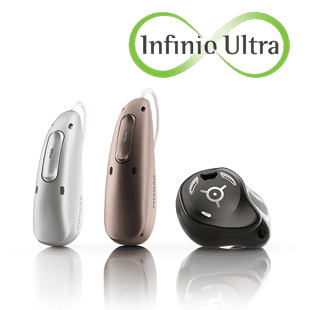
Experiencing stigma: Different perspectives on hearing loss and hearing aids
New research reveals how stigma surrounding hearing loss and hearing aids is experienced differently by individuals with hearing loss, their families, and hearing care professionals, and why those differences matter for clinical care.
As part of a multidisciplinary group of researchers at the University of Queensland, we have been investigating the topic of stigma through a large-scale research program supported by the Hearing Industry Research Consortium.
One of our papers from that research —The experience of stigma related to hearing loss and hearing aids: perspectives of adults with hearing loss, their families, and hearing care professionals—explores how stigma related to hearing loss and hearing aids is experienced from multiple viewpoints.
To gain deeper insight, we conducted interviews with 20 adults with hearing loss, 20 of their family members, and 25 hearing care professionals. The study aimed to understand how and when stigma-induced identity threat occurs in daily life.
Key findings
Our analysis revealed two main themes regarding stigma experiences:
- Hearing loss and hearing aids are associated with stereotypes of aging, disability, and difference. Across all participant groups, hearing loss and hearing aids were frequently linked to negative stereotypes─ particularly those related to aging, disability, reduced intelligence, weakness, and being perceived as “different” or “less than normal.” The most frequently mentioned stereotype was the association with aging.
- There are varied views on the existence and experience of stigma. Interestingly, we found a mismatch between how different groups perceived stigma. Adults with hearing loss often focused more on the stigma surrounding the hearing loss itself, whereas hearing care professionals emphasized concerns about hearing aid visibility and appearance. Many adults with hearing loss reported feelings of embarrassment, sadness, or concern, although some reported no negative feelings.
Different perspectives
- Adults with hearing loss reported a wide range of experiences related to stigma. Some expressed a sense of comfort and connection when interacting with others who also had hearing loss ─one participant even took the initiative to start a support group. However, others shared negative experiences, particularly in healthcare settings where their communication needs were not always recognized or accommodated (e.g., providers speaking too loudly or not adapting their communication approach).
- Family members, by contrast, experienced very little “affiliate stigma” (stigma experienced by association). Most reported not feeling embarrassed or bothered by their family member’s hearing loss or hearing aid use. This is a notable finding, as affiliate stigma has been documented in families of people with other health conditions.
- Hearing care professionals, meanwhile, tended to focus on the stigma of hearing aids more than hearing loss itself. They often believed that appearance-related concerns were the major barrier. However, adults with hearing loss and their families generally held positive views about the aesthetics of modern hearing aids.
Clinical implications
These differing perspectives have important clinical implications. While hearing care professionals may prioritize addressing concerns about hearing aid appearance, clients may be more affected by the broader stigma of hearing loss itself.
Our findings suggest that adults who experience such stigma are less likely to tell others about their hearing loss. Healthcare professionals should consider asking clients whom they have talked to about their hearing difficulties, as this can offer valuable insight into whether the client experiences stigma. It is also important not to assume that any stigma experienced is solely related to the use of hearing aids.
By understanding these different perspectives, hearing are professionals can better align their support with clients’ actual concerns─ ultimately providing more targeted support to overcome barriers to hearing rehabilitation.
Want to learn more?
You can access the full open-access paper here.
All papers from the University of Queensland’s stigma research program are featured in a Special Issue of the International Journal of Audiology.
Acknowledgement:
This research was supported by a grant from the Hearing Industry Research Consortium. Many thanks to the research team: Professor Louise Hickson, Dr Katie Ekberg, Dr Barbra Timmer, Professor Nerina Scarinci, Dr Carly Meyer, Dr Monique Waite, and Dr Mansoureh Nickbakht.
Reference:
Nickbakht, M., Ekberg, K., Waite, M., Scarinci, N., Timmer, B., Meyer, C., & Hickson, L. (2024). The experience of stigma related to hearing loss and hearing aids: perspectives of adults with hearing loss, their families, and hearing care professionals. International Journal of Audiology, 1–8. https://doi.org/10.1080/14992027.2024.2353862
